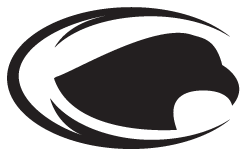
A Sophisticated Approach to Financial Services
EVERY investor or retiree deserves to have innovative and sophisticated portfolios typically reserved for the institutional and high net-worth investors.
Who We Are
We are driven by the belief that EVERY investor deserves to have the type of innovative and sophisticated portfolios typically reserved for the ultra-high net worth or institutional investors. Through portfolios uniquely crafted for each individual, our clients can gain clarity and transparency of their retirement. Hawks Financial is an exclusive firm, specializing in innovative investment and retirement solutions not typically available to the traditional investor through a “big-box” investment firm.



AFFILIATE PARTNER OF 401(k) MANEUVER
Professional Account Management to help employees Grow and Protect their 401(k)
Risk Management And Financial Planning







Investment Management
You deserve a portfolio uniquely designed around you and your goals. Experience sophisticated strategies not typically found in a "big box" firm.
Learn about our Investment Management
Retirement Income Planning
Is the possibility of outliving your savings a concern? Create peace of mind through a portfolio designed around sustaining income.
Learn about our Retirement Income Planning
Estate and Legacy Planning
The concept of estate planning is simple. The vehicles, planning, and implementation to make it happen is not. We help direct you in ways to make your legacy secure.
Learn about our Estate and Legacy Planning
Wealth Management
Experience personalized guidance for 401(k) and IRA Rollovers, Roth Conversions, and Cash Management. Understand fully how to mitigate current portfolio fees and expenses and learn if tax-free growth is right for you.
Learn about our Wealth Management
Long Term Care
Did you know the average Home Health Aide service in Iowa costs $5,577 per month? Create a strategy for funding Assisted Living or other long-term care needs without draining your retirement assets.
Learn about our Long Term Care
Life Insurance
Life insurance can be a cornerstone of retirement protection. From protecting loved ones to providing tax-advantaged assets and income, create a life insurance plan as unique as your goals.
Learn about our Life Insurance ReadmoreWhat to Do with Your 401(k) during Market Volatility (4/14/2025)
ReadmoreWhat to Do with Your 401(k) during Market Volatility (4/14/2025)
Watching your 401(k) account dip during a market downturn can feel like a punch to the gut.
We understand it’s stressful. It’s emotional.
And if you’re like most people, your first instinct might be to hit the panic button.
But here’s the truth: Panicking is the worst thing you can do when it comes to your retirement savings.
Market volatility is a normal part of the investment cycle. Ups and downs happen.
What matters is how you respond to them.
In this article, we’ll walk you through what not to do and what actions may help you stay on track.
Why You Shouldn’t Panic

Market corrections are expected, and we have always recovered relatively soon so we believe longer-term investors should consider corrections an opportunity, as opposed to a reason to panic
Historically the market has recovered from 5-10% corrections in an average of about 3 months. 10-20% corrections have averaged about 8 months.
But that doesn’t make it easier in the moment.
When your 401(k) takes a hit, it’s natural to feel anxious – even fearful.
That emotional response may tempt you to sell off investments or stop contributions altogether.
Don’t.
Panic selling locks in your losses and typically turns a temporary dip into a permanent setback.
And yet, many investors do exactly that.
Instead of reacting emotionally, remind yourself:
- Volatility is part of investing.
- Historically, the market has always recovered.
- Your 401(k) is a long-term plan – not a short-term gamble.
According to Fox Business, “The average recovery time from a 10% downturn has been three months. The average recovery time from a 20% adjustment is eight months. Now, it may not happen this time, but it will certainly recover.”¹
That’s not a long time in the grand scheme of retirement planning.
We believe the real danger isn’t the dip – it’s the decision to abandon your plan because of it.
Take a breath. Reassess. And remember, downturns don’t last forever – but smart planning can.
Stay Focused on the Long Term

When the market dips, it’s tempting to think short-term, especially when you see your 401(k) balance drop.
But the truth is, your retirement savings strategy should be focused on the long game.
401(k)s are designed to grow over time.
Market volatility may feel unsettling in the moment, but it’s just one piece of a much bigger picture.
Selling out of the market or making big changes based on short-term performance can often lead to missed opportunities.
In fact, financial professionals repeatedly stress the importance of time in the market rather than timing the market.
While no one can predict exactly what might happen, missing even a few of the market’s best days may reduce long-term returns.
If you panic and pull out during a downturn, you not only lock in your losses – you also risk missing the rebound.
This is why we feel it’s essential to stick with your strategy and stay focused on long-term goals.
Keep contributing. Keep investing.
And if anything, use this moment to double down on smart habits that support the kind of retirement you actually want.
Don’t Stop Contributions – Consider Buying the Dip

One of the worst mistakes to make during market turbulence?
Pausing your 401(k) contributions.
When stocks drop, they essentially go on sale.
That means every dollar you invest during a downturn buys more shares than it would when prices are high.
Over time, this could lead to stronger growth when the market recovers.
So instead of backing off, consider staying the course — or even increasing contributions if your budget allows.
Especially if you have matching contributions.
This is free money and allows you to buy more shares at lower prices.
This may be a smart time to consider frontloading contributions if you have a bonus, tax return, or extra cash on hand.
Just make sure that accelerating your contributions won’t interfere with any employer match formulas or strain your monthly budget.
If you’re worried about timing, automate your contributions so you stay consistent – regardless of the market’s ups and downs.
The takeaway here?
Don’t freeze. Don’t stop. Keep investing, especially when prices are low.
This is one way long-term investors turn short-term volatility into long-term gains.
Rebalancing (Not Reacting) Is the Right Move

Instead of making emotional decisions when the sky feels like it’s falling, we believe one of the smartest strategies is rebalancing.
Rebalancing is the process of realigning your portfolio back to its original target allocation – like maintaining a 60/40 balance between stocks and bonds.
Over time, certain investments may grow faster and throw off that balance, exposing you to more risk than you originally intended.
For example, let’s say your target was 60% stocks and 40% bonds.
After a long bull market, you might be sitting closer to 80% stocks and only 20% bonds.
That might look good on paper…until the market drops.
Suddenly, you’re much more exposed to losses than you planned for.
Rebalancing helps you avoid that.
It’s not about reacting to headlines—it’s about staying aligned with your risk tolerance and retirement timeline.
It also works in your favor during good markets.
Selling high-performing assets to buy underperformers may feel counterintuitive, but it positions your portfolio to take advantage of the next growth cycle while keeping your overall risk in check.
And as you get closer to retirement, managing risk becomes even more important.
That’s when shifting more of your portfolio into stable investments – like bonds – may help preserve what you’ve worked so hard to save.
Finally, if you’ve experienced a major life change such as a job switch, 401(k) rollover, inheritance, or even just a large sum of money, rebalancing helps you reset and get your money working for your current goals, not your past assumptions.
Rebalancing isn’t about reacting – it’s about protecting.
It’s one of the most powerful yet overlooked moves to make to stay in control of your retirement savings.
Consider Professional Advice

If market volatility has you second-guessing your strategy, or if you’re getting close to retirement, it may be time to bring in a professional.
Professional advice may help you take the emotion out of investing and make decisions based on data, goals, and strategy – not headlines or gut feelings.
Whether you’re unsure how to rebalance your 401(k), not confident you’re saving enough, or just want peace of mind knowing someone is monitoring your account, having a trusted expert in your corner may make all the difference.
401(k) Maneuver provides independent, professional account management to help employees, just like you, grow and protect their 401(k) accounts.
Our goal is to increase your account performance over time, manage downside risk to minimize losses, and reduce fees that are hurting your retirement account performance.
We review and rebalance your account for you with the goal in mind of keeping you in what is working and out of what is not.
With 401(k) Maneuver, you can go about your life doing what you love with confidence, knowing we are managing your 401(k) for you.
Have questions or concerns about your 401(k) performance? Click below to book a complimentary 15-minute 401(k) Strategy Session with one of our advisors today.
Sources:
 ReadmoreYour Second Quarter Financial To-Do List (4/7/2025)
ReadmoreYour Second Quarter Financial To-Do List (4/7/2025)
As we move into the second quarter, now may be the perfect time to assess your finances, adjust your budget, and set yourself up for a stronger financial future.
The second quarter offers a unique opportunity – you’ve had a few months to see what’s working (and what’s not), and there’s still plenty of time left in the year to make meaningful progress.
Whether you need to rebalance your 401(k), maximize retirement contributions, or start planning for summer expenses, this second quarter financial to-do list may help you stay on track and make smart money moves for the rest of 2025.
#1 Assess Your Progress

The first thing you should do is assess your progress. What have you accomplished in the first quarter? What turned out to be more difficult than you expected?
If you see areas in your finances where you are not where you want to be, plan steps to get back on track.
#2 Review Your Budget

Next up on your second quarter financial to-do list is to review your budget and make adjustments based on how the year is shaping up.
Your cash flow doesn’t stay the same year-round, so neither should your budget.
Maybe you’ve received a raise or a work bonus. Have you decided how to allocate that extra income?
Without a plan, it’s easy for additional earnings to disappear into everyday spending.
On the flip side, expenses can creep up, too.
Rent increases, unexpected car repairs, or other new financial commitments might be eating into your budget.
If that’s the case, we feel now’s the time to adjust your spending to keep your finances on track.
#3 Pay Yourself First (and More)

Prioritize yourself financially and commit to paying yourself first.
Automatically set aside a portion of every paycheck for retirement or savings before covering any other expenses like bills or discretionary spending.
If you’re not already doing this, start now.
If you are already contributing to your 401(k) or IRA, challenge yourself to increase your savings rate – even a small boost could make a big difference over time.
Think your budget won’t allow for a higher contribution?
Take a closer look at your spending.
Are there areas where you can cut back to free up extra savings?
If increasing your contributions feels impossible, it may be a sign that you’re overspending or stretching beyond your means.
Take a good hard look at where your money is going and see where you could pay yourself more.
#4 Turn Your Tax Refund into a Retirement Boost

If you’re expecting a tax refund this year, consider putting it to work for your future instead of spending it on short-term splurges.
While a new TV or a shopping spree might bring instant gratification, using your refund to increase your retirement savings may potentially have a much greater impact over time.
One way to do this is by directing your refund toward your 401(k).
Contact your Human Resources department and request an adjustment to your contribution amount for an upcoming paycheck.
Your paycheck will be reduced by the extra amount you invest, but you could use your tax refund to cover living expenses during that period.
If you have a Traditional or Roth IRA, you can allocate your refund directly into your account by using IRS Form 8888.
Another option? If you already contribute automatically each month, make a one-time additional deposit equal to your refund to give your retirement savings an extra boost.
A tax refund is money you weren’t counting on, so why not use it to strengthen your financial future?
#5 Max Out Your IRA for 2024

If you haven’t maxed out your IRA contributions for 2024, there’s still time.
The IRS allows you to contribute until April 15, 2025, so you can still take advantage of this powerful retirement savings opportunity.
Take a close look at your finances and see how much more you can put toward your retirement before the deadline.
Even if you can’t contribute the full amount, every extra dollar you invest now grows tax-advantaged and may make a meaningful impact on your future savings.
#6 Rebalance Your 401(k)

This second quarter financial to-do list item might be more impactful than you think.
And it doesn’t require you to save more money.
What if we told you that by failing to rebalance, you may be essentially turning your investments (and your future retirement income) over to chance.
Here’s why: Failing to regularly rebalance your 401(k) portfolio may result in significant losses during bad markets and may open you up to more risk exposure than you initially intended.
In our opinion, when it comes to the market, the only constant is change. The stock or mutual fund that you chose last quarter may or may not necessarily still be going in the right direction for you.
If you aren’t rebalancing your account allocations, you may experience much larger losses in down markets and may miss the opportunity for growth during good markets.
Which is why this personal finance tip for second quarter may help you earn and keep more of your hard-earned money.
Check out this video below to learn more about rebalancing your 401(k).
#7 Plan Now for Summer Vacations

Summer vacations are months away, but planning now may keep costs under control.
Flights, hotels, and rental cars typically increase in price as summer approaches, so book early to lock in lower rates and secure availability.
Planning ahead may also give you time to save extra money, reducing the need to rely on credit cards or dip into your emergency fund.
First, estimate your vacation costs, including travel, accommodations, activities, dining, and even souvenirs.
If the total seems too high, cut back on unnecessary spending now and redirect that money toward your trip.
Preparing for summer vacations – big or small – helps you stay in control of your finances and enjoy a stress-free summer getaway without post-vacation financial regret.
#8 Check Your Credit Score and Protect against Fraud

With cybercrimes and data breaches on the rise, reviewing your credit score and financial accounts regularly is a must.
The start of the second quarter may be a great time to request a credit report to spot any errors and suspicious activity before they become bigger problems.
Go a step further by reviewing your credit card statements and bank accounts to ensure no unauthorized transactions have slipped through.
If you haven’t already, set up fraud alerts with your bank and credit card companies.
#9 Get Professional Help

We believe one of the most important second quarter personal finance tips is to seek professional help.
Speaking to a third-party expert during the second quarter may help you get on track with your financial goals for the remainder of 2025.
If you have a 401(k), we are here to help you grow and protect your 401(k) account.
And we do this without in-person meetings so you don’t have to drive to an appointment or spend hours preparing for the meeting.
Our done-for-you, virtual service allows you to keep your 401(k) right where it is while we review and rebalance your account based on your risk tolerance and current market conditions.
All you need to do is to connect your account to our secure platform, and we manage your account for you.
As a fiduciary, we are bound by law to put your interests first, and we do not receive commissions when we rebalance your account.
Have questions about your 401(k) performance? Book a complimentary 15-minute 401(k) Strategy Session with one of our advisors.
.fb-background-color {
background: !important;
}
.fb_iframe_widget_fluid_desktop iframe {
width: 1100px !important;
}
 ReadmorePre-Retiree Confidence Is Declining: How to Prepare Now (3/31/2025)
ReadmorePre-Retiree Confidence Is Declining: How to Prepare Now (3/31/2025)
We feel retirement planning has never been more important, yet confidence in a secure financial future is shrinking.
A March 2025 Fidelity Investments® State of Retirement Planning study reveals that while 7 in 10 of those currently in retirement feel stable, confidence in retirement outlook among pre-retirees has dropped by 7 percentage points from last year.¹
Gen X-ers are the least confident about retirement. “Just over half (53%) of Gen X-ers are confident they will be able to retire on their own terms, and one-third say they may continue to work in retirement to supplement their income,” the study reports.²
Participants cited rising cost of living and healthcare expenses as the top reasons for concern.
According to Fidelity, “Among pre-retirees, 62% are uncertain whether their retirement savings will last forever, and a majority remain wary of the rising cost of health care and what portion of their income will be covered by Social Security.”³
With the average American expected to spend upward of $165,000 on healthcare during retirement – up 5% from a year ago – it’s no wonder people are worried if they have enough saved.⁴
What Current Retirees Wish They Had Done Better

In the same Fidelity study, 7 in 10 of current retirees surveyed said the rising cost of living (especially healthcare expenses) has eaten into their retirement savings.
Interestingly, they asked retirees if they could go back in time, what would they do differently…
- 38% said they wished they started saving earlier
- 22% would have managed debt better
- 22% would have prepared better for inflation and rising living costs
- 19% wished they managed spending better
- 19% wished they waited longer to retire⁵
And, “Of those who say they did not plan for healthcare costs appropriately, more than half (57%) say health care is more expensive than they anticipated. 4-in-10 (43%) say Medicare covers less than they thought.”⁶
It’s up to You to Plan and Save

With pensions all but a thing of the past, it’s up to Americans to plan and save better for retirement, get out of debt, and manage spending better.
According to Fidelity, “61% of Americans in their planning years say retirement savings from IRAs, 401(k)s, or other workplace and small business plans will be one of their biggest income streams – compared to about half of today’s retirees.”⁷
Rising costs, healthcare expenses, and economic uncertainty have made 401(k) savings essential for the next generation of retirees.
But without proper planning, future retirees could face a savings gap that forces them to delay retirement or rely on Social Security more than expected (which is not a recommended strategy). Read more on that here.
Steps to Prepare Now for Retirement

With confidence in retirement declining, we believe now is the time to take control of your financial future.
Proactive steps today could make a huge difference later.
#1 Increase 401(k) Contributions – Save as much as possible while still working. Even small increases in contributions may positively impact long-term savings. If you can, maximize your 401(k) contributions.
For 2025, the 401(k) contribution limit is $23,500.
#2 Make Catch-Up Contributions – If you’re 50 or older, take advantage of catch-up contributions to boost retirement savings.
In 2025, workers aged 50 and older are allowed to contribute up to $31,000 to their 401(k)s.
Thanks to the SECURE Act 2.0, workers ages 60 to 63 may contribute an additional $11,250 under the new super catch-up contribution rules.
#3 Get the Employer Match – Many employers match a percentage of employee 401(k) contributions, and it’s a great way to save more without contributing more.
If your employer matches 3% of your salary, you should contribute at least 3% to avoid missing out on free money. Employer matching effectively doubles your contribution rate without additional effort.
Failing to take full advantage of 401(k) matching contributions leaves money on the table that could have compounded over decades.
#4 Avoid Early Withdrawals – Cashing out 401(k) funds before retirement reduces future growth potential and may result in unnecessary taxes and penalties.
#5 Regularly Rebalance Your 401(k) – Rebalancing ensures you are still aligned with your risk tolerance and goals. Failing to rebalance your portfolio could mean losing more than necessary in down markets or not maximizing gains in strong ones. Read more about rebalancing here.
#6 Reduce Debt before Retirement – High-interest debt, like credit cards or loans, may drain savings quickly. Paying down debt now frees up more income for retirement.
#7 Plan for Healthcare Costs – A Health Savings Account (HSA) provides tax-free savings for medical expenses and may help offset rising healthcare costs in retirement.
#8 Delay Social Security – Claiming Social Security at 62 reduces benefits permanently. Waiting until full retirement age or even age 70 can increase monthly payments significantly.
#9 Get Professional Help – If you’re concerned about the quality of your retirement and that you may not have enough saved, get help now.
According to Allianz Life’s 2024 Annual Retirement Study, “Less than half of Americans (44%) say they currently have a plan for how they will take income in retirement. Boomers (67%) are more likely than Gen Xers (30%) or millennials (33%) to say they have a retirement income plan.”⁸
Without plans for retirement income, you may find yourself in the same spot as many elderly Americans are today – relying on family members to take care of you or having to forego essential needs.
Creating plans for retirement income isn’t easy.
It is beneficial to seek help from a professional who can help you come up with a strategy to utilize retirement funds in a way that lasts the rest of your lifetime.
And don’t wait to get help.
Remember, this is your future we’re talking about.
Find out what 401(k) Maneuver may do for your retirement account balance. Click below to book a complimentary 15-minute 401(k) Strategy Session with one of our advisors today.
Sources:
- https://preview.thenewsmarket.com/Previews/FINP/DocumentAssets/690616.pdf
- https://preview.thenewsmarket.com/Previews/FINP/DocumentAssets/690616.pdf
- https://preview.thenewsmarket.com/Previews/FINP/DocumentAssets/690616.pdf
- https://newsroom.fidelity.com/pressreleases/fidelity-investments–releases-2024-retiree-health-care-cost-estimate-as-americans-seek-clarity-arou/s/7322cc17-0b90-46c4-ba49-38d6e91c3961
- https://preview.thenewsmarket.com/Previews/FINP/Documhttps://preview.thenewsmarket.com/Previews/FINP/DocumentAssets/690616.pdf
- https://preview.thenewsmarket.com/Previews/FINP/DocumentAssets/690616.pdf
- https://preview.thenewsmarket.com/Previews/FINP/DocumentAssets/690616.pdf
- https://www.allianzlife.com/about/newsroom/2024-Press-Releases/Americans-Lack-Plans-for-Retirement-Income
.fb-background-color {
background: !important;
}
.fb_iframe_widget_fluid_desktop iframe {
width: 1100px !important;
}
 ReadmoreOne Move That May Improve Your 401(k) Returns in 2025 (3/24/2025)
ReadmoreOne Move That May Improve Your 401(k) Returns in 2025 (3/24/2025)
If you’re looking to improve your 401(k) performance in 2025, there is an often-overlooked strategy that may help.
It’s called rebalancing.
And failing to rebalance your portfolio could mean losing more than necessary in down markets or not maximizing gains in strong ones.
Yet, many 401(k) investors often fail to rebalance, and, in doing so, they potentially miss out on growth while taking on more risk than they intended.¹
Here’s why rebalancing matters and how it may help improve your 401(k) returns in 2025.
What Is Rebalancing?

Rebalancing is the process of realigning your portfolio to maintain your original asset (investment) allocation to stay in line with your risk tolerance and timeline for retirement.
This means you periodically buy or sell assets in your portfolio in order to maintain the initial desired level of asset allocation.
For example, if your goal was to maintain a 50/50 split between stocks and bonds, but your stock investments have grown faster, your portfolio could become 80% stocks and 20% bonds.
This may expose you to more risk than intended, increasing potential losses if the market drops.
To rebalance (return to your initial target of 50/50), you may need to sell some stocks and buy more bonds to bring your allocation back to its original target.
The Difference between Rebalancing and Reallocation

Rebalancing is not the same thing as reallocation.
Reallocation is when you change the percentage of invested assets in different asset classes to balance risk versus reward.
In other words, it is about how much risk you want to take.
Why Is Rebalancing My 401(k) So Important?

There are a few reasons.
First, your investment goals and risk tolerance may shift over time, especially as you get closer to retirement.
Adjusting your asset allocation to align with these changes is key.
Without rebalancing, you may be taking on more risk than necessary to meet your goals.
Failing to rebalance has the potential to do real harm over time to your retirement account performance.
As retirement nears, managing risk typically becomes even more critical, and increasing your bond holdings may be a smart move to help preserve your savings.
Second, in volatile or down markets, rebalancing your 401(k) may help you stay within your risk level and protect against potential losses.
On the flip side, rebalancing may help you take advantage of opportunities for growth during good markets. Let’s say you set up and invested money in your 401(k) in 2014, and your original asset allocation target was to have 60% in stocks and 40% in bonds.
And let’s say those stocks have performed well over this period of time.
If you never rebalanced your account and stocks performed far better than the bonds, you’d have much more money invested in stocks.
This may increase your asset allocation to 80% of your portfolio in stocks and only 20% in bonds.
While your account may have posted high returns during this period, you are now at a higher risk level than you originally selected.
And, should the market drop and stocks take a dive, your retirement savings could potentially suffer major losses, and you might lose some (or a lot) of your hard-earned retirement savings.
If you’re in your 40s, this might not be a big issue to you.
But, if you are nearing retirement, this may cause a lot of anxiety and take a chunk out of your retirement savings.
In this example, to return to your initial 60/40 target weighting, you would need to sell some of your stocks and purchase more bonds.
Another reason to rebalance is if you’ve had certain life events or financial changes.
These could include…
- A significant deposit or withdrawal from your investment or retirement accounts.
- A shift in your risk tolerance or investment strategy that requires an adjustment.
- Changes to your investment options, such as a 401(k) rollover or updates to your employer’s retirement plan.
- Inheriting an IRA or brokerage account, which may require rethinking your asset allocation.
Get Help Rebalancing You 401(k)

If you are unsure how to properly rebalance your account or don’t know where to start, we’re here to help.
401(k) Maneuver provides independent, professional account management with the goal to help employees, just like you, grow and protect their 401(k) accounts.
Our goal is to increase your account performance over time, manage downside risk to minimize losses, and reduce fees that are hurting your retirement account performance.
401(k) Maneuver allows you to go about your life doing what you love with confidence, knowing we are handling the changes for you.
Here’s what you can expect as a 401(k) Maneuver member:
- You receive professional quarterly 401(k) account rebalancing that is personalized to your tolerance to risk and based on current economic and market conditions.
- You get an email notification every time we review your account.
- Membership to our online community where you’ll get exclusive access to content that will help you better prepare for retirement.
- Access to a private Facebook group where you can ask questions and get answers from our expert advisors.
Find out what 401(k) Maneuver may do for your retirement account balance. Click below to book a complimentary 15-minute 401(k) Strategy Session with one of our advisors today.
Sources:
- “Over 90% of Americans make this 401(k) Mistake.” Mauri Backman, The Motley Fool.
.fb-background-color {
background: !important;
}
.fb_iframe_widget_fluid_desktop iframe {
width: 1100px !important;
}
 ReadmoreWorried about the Market? Here’s What You Need to Know (3/17/2025)
ReadmoreWorried about the Market? Here’s What You Need to Know (3/17/2025)
When markets drop, it can be easy to panic.
But history shows that staying invested through downturns can often be the smartest move.
In this special market update, we break down what’s happening right now – and why sometimes doing nothing may be the best strategy.
What’s Going on in the Market

We’re seeing corrective activity in the market right now.
Whenever the market goes down, it can be easy to get anxious – and sometimes we begin to think with our hearts instead of our heads.
So we encourage you to understand that historically markets do not go straight up.
We believe we will recover from this just as we have the other 64 times since World War II.
The very fact that the market came off new highs recently shows that we have recovered from every market drawdown 100% of the time.
We feel the key is to try to think 5 – 6 months down the road – a year down the road – and expect that we will recover.
In our opinion, the American economy is in good shape. Corporate earnings are good. Corporate margins are good. The consumer is still in good shape.
And interest rates are expected to come down.
The most recent Fed survey indicated that they now think the Federal Reserve will cut interest rates 3 times starting in June – probably June, September, and December.
What we have going right now is commonly referred to as profit taking.
Think of it this way: Sometimes we have to come down and set a better foundation so we’re able to sustain the next move up.
Right now, it appears that we are at a period of short-term uncertainty, but long-term fundamentals remain strong.
And history tells us that investors who stay patient and avoid panic selling are typically rewarded when the market turns.
Check out the video as Mark Sorensen, our Chief Investment Officer, explains more on why markets are reacting the way they are, whether or not we’re in another tech bubble, and what to expect next.
401(k) Maneuver provides professional account management with the goal to help you grow and protect your 401(k).
Our goal is to increase your account performance over time, manage downside risk to minimize losses, and reduce fees that harm your account performance.
There are no time-consuming in-person meetings and nothing new to learn, and you don’t have to move your account. Simply connect your account to our secure platform, and we regularly review and rebalance your account for you, when necessary. Click here to see how it works.
Find out what 401(k) Maneuver may do for your retirement account balance. Click below to book a complimentary 15-minute 401(k) Strategy Session with one of our advisors today.
.fb-background-color {
background: !important;
}
.fb_iframe_widget_fluid_desktop iframe {
width: 1100px !important;
}
 ReadmoreThink Social Security Will Cover Retirement? Think Again. (3/10/2025)
ReadmoreThink Social Security Will Cover Retirement? Think Again. (3/10/2025)
Many Americans mistakenly believe Social Security will be enough to fund their retirement – but reality paints a different picture.
Consider the most recent cost of living adjustment.
The 2025 Social Security COLA increase is just 2.5%.¹
This minimal increase means “retired workers’ Social Security checks will grow by around $48 a month, going from an average of $1,920 to $1,968.”²
We don’t feel $50 extra is enough to cover the high cost of retirement. Do you?
If you want a comfortable retirement, you may need more than Social Security. Keep reading to learn why and what you can do to secure your financial future.
#1 Social Security Is Not Meant to Live On

Social Security was never meant to fully fund an individual’s retirement.
It was designed to supplement retirement income.
According to the Social Security Administration’s Understand the Benefits, “Social Security was never meant to be the only source of income for people when they retire. Social Security replaces a percentage of a worker’s pre-retirement income based on your lifetime earnings. The amount of your average earnings that Social Security retirement benefits replace depends on your earnings and when you choose to start benefits. […] Most financial advisers say you will need about 70 to 80% of pre-retirement income to live comfortably in retirement, including your Social Security benefits, investments, and personal savings.”³
The problem is that many Americans are expecting their monthly Social Security paychecks to cover much more.
As of 2025, the average retired worker receives a monthly benefit check ranging from $1,920 to $1,968. For couples both receiving Social Security benefits, it comes to approximately $3,089.⁴
However, the cost of retirement will most likely continue to rise, especially considering inflation and medical costs.
Experts have long suggested that the cost of retirement is 80% of your pre-retirement income.
This means if you and your spouse make $120,000 in annual income, you should plan to bring in $96,000 annual income or $8,000 a month.
$8,000 a month is significantly more than the just over $3,000 monthly Social Security payment.
What is life going to look like during retirement if you don’t find a way to fund the additional money you need?
#2 The Reality of Living on Social Security Alone

Even with all the information I shared above, 40% of older Americans rely solely on Social Security for retirement income.⁵
This means these individuals are most likely struggling to cover everyday costs.
The Senior Citizens League (TSCL) found “70 percent [of Americans] said they worry that persistently high inflation prices will cause them to raise their spending and risk depleting their retirement savings and other assets.”⁶
Additionally, TSCL reports, “Our research shows that 67 percent of seniors depend on Social Security for more than half their income and that 62 percent worry their retirement income won’t even cover essentials like groceries and medical bills.”⁷
Retirement should be the time in your life when you get to enjoy your life’s rewards – not a time to stress about paying for groceries or doctors’ visits.
But “Nearly half (48%) [of retirees] worry about living too frugally and not enjoying retirement as much as they should.”⁸
#3 Social Security Is in Trouble

Unfortunately, it’s not just that Social Security isn’t enough to fully fund a retirement.
There is a real possibility the program could end or significantly decrease before you retire.
According to CNBC, “The trust fund reserves used to pay beneficiaries are projected to become insolvent in 2035, a year later than previously projected. […] Social Security will still exist after 2035, according to the report. But without congressional action, retirees will only receive 83% of their full benefits.”⁹
Our country has known this is coming, but we still don’t have an answer.
According to the National Institute on Retirement Security, “Despite the popularity of Social Security, federal policymakers have yet to craft a long-term Social Security funding fix to address the impending depletion of the trust fund. In the coming decade, the funding challenges will force the nation into a debate and decisions about the future of Social Security.”¹⁰
#4 How to Save More for Retirement

For those already participating in a 401(k), now may be the time to work hard to get your retirement savings to a place where you can responsibly and comfortably retire.
Use the following tips to help get your savings in a healthier place beyond Social Security.
- Max out retirement contributions. Make it a point to contribute all you are allowed to contribute. If you are age 50 or older, you can take advantage of catch-up contributions, which allow you to contribute more than the 2025 limit of $23,500. For those ages 50 and older, the 401(k) catch-up contribution is $7,500, for a total of $31,000.
Note: Individuals aged 60 to 63 may contribute an additional $11,250. Check out 2025’s Super Catch-Up 401(k) Contribution - Get the employer match. Many employers match a percentage of employee contributions to their 401(k), up to a certain portion of the total salary. And some match employee contributions up to a certain dollar amount. This is like free money! Contribute enough to take advantage of this free money. Get the most out of your company match.
- Rebalance your account. We believe one of the best ways to save money in your 401(k) is to regularly rebalance your account. Unmanaged allocations may experience larger losses because of down markets. In contrast, they may miss out on growth opportunities during good markets.
If you are unsure how to properly rebalance your account or don’t know where to start, we’re here to help. 401(k) Maneuver exists to help employees grow and protect their 401(k) accounts. Our done-for-you, virtual service allows you to keep your 401(k) right where it is while we review and rebalance your account based on your risk tolerance and current market conditions.
Click here to see how we manage your 401(k) for you.
- Consider Delaying Social Security Benefits. For some people, it may be financially wiser to wait to retire. The age you stop working affects how much you earn from Social Security. Plus, the longer you work, the longer your 401(k) has to grow.
Get Help. If you are worried you may be counting on Social Security more than you should, seek help from a financial advisor. An advisor can help you determine a retirement strategy for your 401(k) and other savings vehicles so you aren’t solely reliant on Social Security when it comes time to retire.
Have questions or concerns about your 401(k) performance? Book a complimentary 15-minute 401(k) Strategy Session with one of our advisors.
SOURCES:
- https://faq.ssa.gov/en-us/Topic/article/KA-01951
- https://www.newsweek.com/social-security-cola-2025-increase-sparks-backlash-1967146
- https://www.ssa.gov/pubs/EN-05-10024.pdf
- https://www.ssa.gov/news/press/factsheets/colafacts2025.pdf
- https://www.nirsonline.org/2020/01/new-report-40-of-older-americans-rely-solely-on-social-security-for-retirement-income/
- https://seniorsleague.org/2025-cola/
- https://www.allianzlife.com/about/newsroom/2024-Press-Releases/Americans-Lack-Plans-for-Retirement-Income
- https://www.cnbc.com/select/will-social-security-run-out-heres-what-you-need-to-know/
- https://www.nirsonline.org/reports/socialsecurity2024/
.fb-background-color {
background: !important;
}
.fb_iframe_widget_fluid_desktop iframe {
width: 1100px !important;
}
 Readmore401(k) Tax Implications: What You Need to Know (3/3/2025)
Readmore401(k) Tax Implications: What You Need to Know (3/3/2025)
When it comes to saving for retirement, it may be not just about how much you save – it may be about how much you get to keep.
Understanding 401(k) tax implications may help you maximize your savings and avoid unexpected tax bills down the road.
Are you aware of how your 401(k) contributions affect your taxable income? Or what taxes you’ll owe when you withdraw funds in retirement?
Keep reading to learn tax rules that could impact your 401(k) savings.
#1 Tax-Deferred Contributions

Contributions to a traditional 401(k) are made pre-tax, meaning they may reduce your taxable income in the year you contribute.
This means you don’t pay income taxes on the contributions immediately.
You get a tax break for every dollar that you invest into your 401(k) with pre-tax dollars.
For example, if you earn $50,000 and contribute 3% ($1,500) to your 401(k), your taxable income drops to $48,500.
In some cases, your 401(k) contributions may even push you into a lower tax bracket, reducing your overall tax liability.
Note that, even though 401(k) contributions reduce taxable income, they don’t reduce FICA taxes – which fund Social Security and Medicare.
Your payroll taxes are calculated based on your full paycheck amount, including your 401(k) contributions.
This is important to keep in mind because Social Security was never meant to fully fund retirement – and relying on it alone isn’t a smart strategy.
[Related Read: Are You Saving Enough to Cover These Retirement Expenses?]
#2 No Deductions Needed on Your Tax Return

You don’t need to report 401(k) contributions as deductions when filing your taxes.
Since contributions are taken directly from your paycheck before taxes, your W-2 will already reflect a lower taxable income.
#3 Tax-Deferred Growth

One of the advantages of a traditional 401(k) is that your investments grow tax-deferred – meaning you don’t pay taxes on earnings until you withdraw them.
Your money benefits from compound growth, where you earn returns on both your initial contributions and past earnings.
The longer your money is invested, the more it may grow.
Keep in mind that 401(k) plan participants may rebalance their assets to take advantage of potential growth opportunities, which means this could boost your savings even more!
[Related Read: 5 Perks of Saving for Retirement in a 401(k)]
#4 Employer Contributions Are Tax-Deferred

Employer matching contributions aren’t taxed when deposited, but are taxed when withdrawn in retirement.
Matching contributions count toward your total 401(k) balance, but they don’t count toward your personal contribution limit.
[Related Read: 4 Ways to Potentially Maximize Your 401(k) Company Match]
#5 Roth 401(k) Contributions

The Roth 401(k) is a type of 401(k) that you fund just like a traditional 401(k).
The main difference is that you either get a tax break today with the traditional 401(k), or tax-free withdrawals in retirement with the Roth 401(k) since your contributions are made with after-tax dollars today.
If you contribute to the Roth 401(k), you won’t get a tax break since contributions are made with after-tax dollars.
Whether or not this is a downside is ultimately up to the individual.
Some people need a tax break today, while others aren’t concerned with it and would rather have their retirement be tax-free.
[Related Read: Should I Consider the Roth 401(k)?]
#6 Taxes on 401(k) Withdrawals

Once you retire and start withdrawing money from your traditional 401(k), those withdrawals are taxed as ordinary income in the year you take them.
If you want to take a withdrawal from your 401(k), you need to be at least age 59½ to avoid paying an early withdrawal penalty to the IRS.
These early withdrawals are subject to ordinary income tax on the amount you withdraw plus a 10% early withdrawal penalty.
#7 Taxes on Early Withdrawals

Withdrawing money from a 401(k) before age 59½ may result in penalties and taxes on the withdrawals.
The IRS requires automatic withholding of 20% of a 401(k) withdrawal.
Along with the withholding taxes, the IRS will most likely also hit you with a 10% penalty if you’re under the age of 59½ on all funds withdrawn when you file your tax return.
The amount withdrawn is commonly taxed as ordinary income for the year the money was taken out, which could push you into a higher tax bracket and force you to pay even more taxes.
Let’s say you’re under 59½ and you withdraw $15,000 from your 401(k).
You will wind up having 20% plus the penalty withheld, leaving you with only about $10,500 of the $15,000 early withdrawal.
[Related Read: 401(k) Early Withdrawals May Cost You More Than You Think]
#8 Tax Benefits in Retirement

When you start withdrawing funds from your traditional 401(k) during retirement, you can expect to pay taxes on both the contributions and the earnings, and they are subject to ordinary income tax rates.
However, the tax benefits of a 401(k) plan are designed to help you save for retirement.
By deferring taxes until retirement, you may be in a lower tax bracket than you would have been when you initially made the contributions.
This results in a lower tax bill on withdrawals.
[Related Read: Pros and Cons of a Roth 401(k): Key Differences and Tax Implications]
Get Professional Advice for 401(k) Tax Planning

Understanding 401(k) tax rules is important when it comes to keeping more of your money in retirement.
But navigating tax strategies can be tricky.
Consult with a CPA or accountant to ensure you’re making tax-smart decisions based on your specific financial situation.
This is your retirement we’re talking about – and every dollar you keep can help.
In addition, seek help from a financial advisor to determine how to get the most out of your 401(k) plan.
Have questions or concerns about your 401(k) performance? Book a complimentary 15-minute 401(k) Strategy Session with one of our advisors.
.fb-background-color {
background: !important;
}
.fb_iframe_widget_fluid_desktop iframe {
width: 1100px !important;
}
 Readmore401(k) Mistakes to Avoid in Your 40s and 50s (2/24/2025)
Readmore401(k) Mistakes to Avoid in Your 40s and 50s (2/24/2025)
Your 40s and 50s are often the prime years for building wealth, but too many people may make avoidable mistakes with their 401(k)s – mistakes that could cost them in retirement.
Whether it’s not saving enough, ignoring market shifts, or borrowing from your future, these missteps can add up fast.
The good news?
It’s normally never too late to change course.
Keep reading to learn the top 401(k) mistakes and how you may be able to fix them before retirement sneaks up on you.
#1 Not Increasing Contributions during Peak Earning Years

Your 40s and 50s are often your highest-earning years, yet many people fail to take full advantage of this time to ramp up their retirement savings.
Whether it’s due to lifestyle inflation, debt, or simply not prioritizing retirement contributions, missing this window may potentially lead to a shortfall in your 401(k) savings.
For 2025, the 401(k) contribution limit is $23,500.
For workers aged 50 and older, the catch-up contribution is $7,500, allowing a total contribution of $31,000.
How much you can realistically contribute depends on factors like income, expenses, and debt.
But if you’re in your peak earning years, now may be the time to maximize contributions and take advantage of tax-deferred growth.
If hitting the contribution limit feels out of reach, look for ways to free up extra cash:
- Cut back on nonessential spending.
- Postpone large discretionary purchases.
- Consider picking up a side hustle to increase income.
Every extra dollar you contribute now could make a big difference in your retirement future.
The goal we recommend is to get as close to the contribution limit as possible while balancing your financial situation today.
#2 Assuming Employer Contributions Are Enough

Employer matching contributions are a great perk – they’re essentially free money for your retirement.
But if you’re only contributing enough to get the match and nothing more, you could be setting yourself up for a retirement shortfall.
To maximize your retirement savings, consider increasing your personal contributions beyond just what’s needed for the match.
The more you put in now, the more time your money has to grow, and the less you may have to worry about playing catch-up later.
Your future retirement income depends on what you contribute just as much – if not more than –what your employer provides.
[Related Read: 4 Ways to Potentially Maximize Your 401(k) Company Match]
#3 Ignoring Catch-Up Contributions

If you’re 50 or older, you have a unique opportunity to supercharge your retirement savings.
Once you hit 50, the IRS allows you to contribute extra to your 401(k) through catch-up contributions.
For 2025, the standard 401(k) contribution limit is $23,500, but if you’re 50 or older, you can contribute an additional $7,500, bringing your total possible contribution to $31,000.
This extra savings boost could potentially make a difference in your retirement nest egg – especially if you’ve fallen behind or want to build a larger financial cushion.
Don’t leave money on the table. Take full advantage of catch-up contributions while you are allowed to.
#4 Failing to Rebalance

Market fluctuations may cause your portfolio to become unbalanced over time, with some investments outpacing others.
The investments you initially chose to help you meet your retirement goals – whether that was 2 years ago or 2 months ago – may no longer be the best alternatives for you now or be aligned with your retirement goals.
This is why we recommend you regularly review and rebalance your portfolio.
Rebalancing is the process of realigning the weightings of the assets (your investments) in the portfolio. This can involve periodically buying and/or selling assets in the portfolio in order to maintain the initial desired level of asset allocation.
It’s typically not enough to just rebalance. With professional help, consider rebalancing based on the current economic and market trends rather than just realigning allocations.
#5 Taking 401(k) Loans for Nonemergencies

Borrowing from your 401(k) might seem like an easy way to cover expenses, but using your retirement savings as a personal bank may come with serious financial setbacks.
A December 2023 report revealed that more Americans are turning to 401(k) loans, with 138,000 people borrowing an average of $10,778 in just one quarter.¹
Rising costs and financial stress are pushing many to dip into their retirement funds.
But when you take out a 401(k) loan, you’re borrowing from your future.
Even though you’re required to pay it back with interest, you are most likely missing out on growth. For example, if you left $75,000 in your 401(k) untouched for 15 years with a 6% return, it could grow to nearly $179,741. Taking a loan disrupts this growth potential.
Another major risk?
Losing your job while you have an outstanding loan.
If this happens, you typically have until the tax deadline of the following year to pay back the full balance.
If you can’t, the unpaid amount is treated as an early withdrawal – meaning you may owe income taxes and a 10% penalty if you’re under 59½.
Before considering a 401(k) loan, explore other options like cutting expenses or seeking financial advice.
Your future self may thank you for keeping your retirement savings intact.
[Related Read: How a 401(k) Loan Could Derail Your Retirement Goals]
#6 Delaying Retirement Planning Until It’s Too Late

Many people put off saving for retirement, thinking they’ll “catch up” later.
But waiting until your late 50s to get serious about retirement savings may make it much harder to build the nest egg you need.
Time is one of the most powerful tools in retirement planning.
The earlier you start, the more you may be able to take advantage of compound growth, which allows your savings to grow exponentially over time.
The later you start, the more you have to rely on larger contributions – and that can be tough when you’re juggling mortgage payments, healthcare costs, and other financial obligations.
#7 Not Getting Professional Advice

If you’d like to take control of your financial future and potentially have more income at retirement, we strongly suggest getting third-party advice.
If you’re hesitant to reach out for advice because you think your account balance isn’t big enough, or you think you’re too close to retirement to get help, don’t let that stop you!
401(k) Maneuver provides professional account management with the goal to help you grow and protect your 401(k).
Our goal is to increase your account performance over time, manage downside risk to minimize losses, and reduce fees that harm your account performance.
There are no time-consuming in-person meetings and nothing new to learn, and you don’t have to move your account.
Simply connect your account to our secure platform, and we regularly review and rebalance your account for you, when necessary. Check here to learn more about how it works.
If you have questions about your 401(k) or if you need help, we’re here for you. Click below to book a complimentary 15-minute 401(k) Strategy Session.
SOURCES:
- https://www.cnbc.com/2023/12/10/more-americans-take-401k-loans-an-indicator-of-financial-stress.html
.fb-background-color {
background: !important;
}
.fb_iframe_widget_fluid_desktop iframe {
width: 1100px !important;
}
 ReadmoreHow to Avoid 401(k) Withdrawal Penalties (2/17/2025)
ReadmoreHow to Avoid 401(k) Withdrawal Penalties (2/17/2025)
401(k) plans are designed to help in retirement, but if you don’t follow the rules, you may find yourself facing 401(k) withdrawal penalties.
This is because the purpose of a 401(k) plan is to provide money following retirement from employment – not function as a general savings account.
If you are unaware of 401(k) withdrawal penalties, you may be shocked when you get stuck with a high tax bill.
Read on to learn more about 401(k) withdrawal penalties and how to avoid them.
Rules for 401(k) Withdrawals at Retirement Age

There are rules for withdrawing funds from a 401(k).
If you do not follow these rules, you may face 401(k) withdrawal penalties.
For instance, while you can withdraw money from your 401(k) at any point, you may face a penalty from the IRS of 10% if you withdraw funds before age 59½.
Distribution Rules
When you are ready to withdraw from your 401(k), there are rules about how the funds are distributed.
You may opt to receive regular distributions for a set period of time, or you may opt to take lump-sum withdrawals.
The remaining money is still invested, and your portfolio may change based on these investments.
You can also cash out your 401(k).
However, you will be required to pay taxes on the full amount of the withdrawal, which could mean a huge tax bill and possibly a higher tax bracket.
Your age plays a leading role in distribution rules.
If you withdraw from your 401(k) before 59½, this is considered an early withdrawal and is subject to penalties.
You can keep your money in your 401(k) until you are 73 or 75.
At this age, you must take required minimum distributions (RMDs) regularly. This is a set amount based on your life expectancy and account balance. You may withdraw more than this set amount, but you are not allowed to withdraw less.
If you were born from 1951 to 1959, you can begin taking RMDs when you turn 73. If you were born in 1960 or later, you can begin taking RMDs at 75.
If your 401(k) plan holds less than $5,000, you may be required to take a lump-sum distribution.
Tax Rules
When you withdraw money from a traditional 401(k), it is taxed as regular income in the year you take the money out.
This means you will pay taxes on the withdrawals at your current income tax rate.
Your 401(k) withdrawals will be considered taxable earnings for the year they were withdrawn.
However, the tax benefits of a 401(k) plan are designed to help you save for retirement.
By deferring taxes until retirement, you may be in a lower tax bracket than you would have been when you initially made the contributions.
Contribution Rules
Once you retire and leave your employer, you are no longer allowed to contribute to your 401(k) plan.
Should your plan only contain between $1,000 and $5,000, your employer may try to force you out of the plan, and you may be required to roll over funds.
The other option for those with less than $5,000 is to take a lump-sum payment.
If you want to continue to contribute to a retirement savings vehicle after you retire from your employer, you may want to consider rolling over your 401(k) savings into an IRA.
However, you are still only allowed to contribute earned income, so this option is for those who have not fully retired and are still earning some sort of taxable income (such as part-time income in post-retirement).
401(k) Withdrawal Penalties

The IRS requires an automatic withholding of 20% of a 401(k) early withdrawal for taxes.
For instance, if you withdraw $15,000 from your 401(k), you may only get about $12,000 after taxes are taken out.
Along with the withholding taxes, the IRS will also hit you with a 10% penalty on all funds withdrawn when you file your tax return – if you’re under the age of 59½.
But it’s not just a 10% penalty.
The amount withdrawn may also be taxed as ordinary income for the year the money was taken out – which may push you into a higher tax bracket, forcing you to pay even more taxes.
Now, back to the example.
Let’s say you’re under 59½, and you pull out $15,000 from your 401(k).
At this point, you are up to 30% in taxes and penalties.
This means you may only get about $10,500 of the $15,000 early withdrawal.
The exact number depends on individual tax circumstances – some may get some of the 20% withholdings back
[Related Read: Why a 401(k) Withdrawal Should Be Your Last Resort]
How to Avoid 401(k) Withdrawal Penalties

The first way to avoid the penalty is to wait until you are 59½ to take money out of your 401(k).
However, there are some situations that may qualify for an exemption from the 10% penalty.
- The first way is if you qualify for a substantially equal periodic payment plan.
With this plan, retirement plans may be cashed out penalty-free. But this is only if you take annual distributions for a period of 5 years or until you turn 59½. However, income tax must still be paid on the withdrawals.
- The second way is if you leave your job – but this only applies to those aged 55 and over.
This is what is called the 55 and Separated from Service rule. This is an IRS policy that allows workers aged 55 and over to take early withdrawals from their employer-sponsored retirement accounts without paying a 10% penalty provided that they leave their jobs. It only applies to accounts you have with your current employer. But you will still owe taxes on the withdrawal, and funds withdrawn will be taxed as ordinary income. - The third is if you’re getting a divorce and must pull money out of your 401(k) to give to your spouse.
If this happens, then you won’t be charged a penalty for taking money out of your 401(k).
Situations That Qualify for Hardship Withdrawal

Another means for avoiding 401(k) withdrawal penalties is to take a hardship withdrawal.
A hardship withdrawal is a withdrawal of funds from a retirement plan due to “an immediate and heavy financial need,” and if you qualify, you usually don’t have to pay the penalty.
Situations that qualify for a hardship withdrawal:
- Medical bills for you, your spouse, and your dependents
- Money to buy a house
- Money to avoid foreclosure or eviction
- Higher education expenses for you, your spouse, or your dependents
- Funeral expenses
- Disability
- Adoption purposes
- Disaster
- Military reservist
Now, in order to qualify, you need to prove you can’t get the money anywhere else – for example, you can’t get a loan, and you don’t have a savings account.
The administrator of the 401(k) will have to approve a 401(k) hardship withdrawal. They’ll want to see the documentation of the hardship.
Keep in mind – If you do qualify, you will still have to withhold 20%, and it’s taxed as ordinary income.
[Related Read: The Real Impact of 401(k) Hardship Withdrawals]
The Longer You Wait, the Better

Ultimately, the longer your money is invested in your 401(k), the more it has the opportunity to grow.
While you cannot continue contributing to your 401(k) after you retire, your money can still grow while it is invested.
Another thing to consider is when to retire.
The longer you wait to retire, the better.
In addition to giving you more time to contribute to your 401(k), Social Security benefits are based on your highest 35 years of earnings.
Speak to a financial advisor and a tax professional before you make any 401(k) withdrawals.
They can help you understand the tax implications, 401(k) withdrawal penalties, and your financial future.
Click below to book a complimentary 15-minute 401(k) Strategy Session with one of our advisors today.
.fb-background-color {
background: !important;
}
.fb_iframe_widget_fluid_desktop iframe {
width: 1100px !important;
}
 ReadmoreHow a 401(k) Loan Could Derail Your Retirement Goals (2/10/2025)
ReadmoreHow a 401(k) Loan Could Derail Your Retirement Goals (2/10/2025)
It is becoming more popular to take a 401(k) loan.
A December 2023 report found “more retirement savers have taken loans from their 401(k) accounts over the past year, suggesting that U.S. households are borrowing more readily as they feel the pinch of inflation.”¹
David Blanchett, a certified financial planner and head of retirement research at PGIM, the asset management arm of insurer Prudential Financial, says, “I think 401(k) loans – like credit card debt – are kind of leading indicators of economic stress in America.”²
As Americans struggle to make ends meet, they may need to make tough choices.
One way to ease some of the financial burdens they face: Taking a 401(k) loan.
As Blanchett explains, “Individuals are having to tap their retirement savings because they have to pay for or pay back something.”³
Approximately 138,000 people in this particular study took a loan from their workplace plan in the third quarter of 2023, borrowing an average of $10,778.⁴
While 401(k) loans are an option, it’s important to understand their potential impact before making a decision.
Read on to learn why a 401(k) loan could impact your long-term retirement savings strategy.
The Difference between a 401(k) Loan and a Withdrawal

A 401(k) loan allows you to borrow money from your own 401(k) retirement account, but you must pay it back with interest.
The money you pay back and interest both go back into your 401(k) retirement account.
A 401(k) loan must be paid back typically within 5 years, with interest, and you do not have to pay taxes on the amount borrowed – unless you fail to repay it in the required time frame.
In contrast, 401(k) withdrawals are permanent removal of funds and are subject to ordinary income tax on the amount withdrawn plus a 10% early withdrawal penalty.
For today, we are focusing on explaining 401(k) loans, not 401(k) withdrawals.
401(k) Loan Rules

The first thing to know about 401(k) loans is that not every employer-sponsored 401(k) plan allows participants to borrow from the plan.
You must check first to see if your plan permits 401(k) loans.
Then, you’ll need to determine how much you’re allowed to borrow.
Ultimately, how much you are allowed to borrow is determined by the plan.
According to the IRS, “Generally, if permitted by your plan, you may borrow up to 50% of your vested account balance up to a maximum of $50,000.”⁵
In addition, there are also rules about how much time you have to repay what you borrowed.
According to the IRS, “The loan must be repaid within 5 years, unless the loan is used to buy your main home. The loan repayments must be made in substantially level payments, at least quarterly, over the life of the loan.”⁶
You will also be expected to pay the borrowed money back with interest.
Your 401(k) plan may have additional rules, such as requiring consent from a partner or spouse to take a 401(k) loan.
That’s not all.
Some 401(k) plans prohibit you from making additional contributions until the loan is paid off.
If your plan restricts contributions while a loan is outstanding, it could affect your future 401(k) balance due to missed employer matching and potential investment growth.
What to Know about Leaving a Job with a 401(k) Loan

Another important thing to consider before taking a 401(k) loan is how long you plan to stay with the same employer.
Let’s say you have taken a 401(k) loan and then decide to leave your job or you are fired.
You’ll be expected to pay the loan back by the due date of your tax return in April.
If you do not pay back the full unpaid balance of the 401(k) loan, then it will be treated as an early withdrawal.
Early withdrawals are costly!
If you are under age 59½, you will also have to pay a 10% federal tax penalty on the unpaid balance along with income taxes on the balance of the loan.
If you have to leave a job before you can pay back the loan, you may find yourself in a vicious debt cycle.
[Learn More: What Happens If I Leave My Job with a 401(k) Loan?]
The Personal Consequences of 401(k) Loans

Pulling out money from your 401(k) today for an immediate cash need may hurt your future retirement.
When you dip into your 401(k), you are borrowing from your future.
You may miss out on the potential growth of the money borrowed – and you could end up with less for retirement (even if you follow the rules and pay it back within 5 years).
To show you how powerful compounded growth is to your future, let’s say you have $75,000 in your 401(k), and you don’t tap into your account.
You are 53, and you plan to retire at 68 – or in 15 years.
Even if you stopped contributing any more money to your 401(k) for the next 15 years and you got a 6% return on your money, that money could grow to $179,741.
In this scenario, there has been almost $100,000 growth to your account balance–without you ever contributing another cent.
When you borrow money from your 401(k), you miss out on this type of compounded growth.
[Related Read: 401(k) Loans: Stop Using Your 401(k) as a Bank]
What to Do instead of Taking a 401(k) Loan

If you are struggling financially and know you have money saved in your 401(k) account, it may be tempting to take a 401(k) loan.
A 401(k) loan should be the last resort.
Consider the following options instead.
- Speak to a financial professional. Get an honest take on what borrowing from your 401(k) could mean for your retirement future. Ask for suggestions on how to cover costs while protecting your future.
- Build an emergency fund. Make setting aside emergency savings a goal. If you have money ready for financial emergencies, you won’t have to borrow from your 401(k).
- Cut expenses. If you are considering a 401(k) loan because you can’t make ends meet, instead of taking a loan, cut back on your expenses. Downsize, eliminate unnecessary spending, and stick to a budget.
Find out what 401(k) Maneuver may do for your retirement account balance. Click below to book a complimentary 15-minute 401(k) Strategy Session with one of our advisors today.
Sources
- https://www.cnbc.com/2023/12/10/more-americans-take-401k-loans-an-indicator-of-financial-stress.html
- https://www.cnbc.com/2023/12/10/more-americans-take-401k-loans-an-indicator-of-financial-stress.html
- https://www.cnbc.com/2023/12/10/more-americans-take-401k-loans-an-indicator-of-financial-stress.html
- https://www.cnbc.com/2023/12/10/more-americans-take-401k-loans-an-indicator-of-financial-stress.html
- https://www.irs.gov/retirement-plans/plan-participant-employee/401k-resource-guide-plan-participants-general-distribution-rules
- https://www.irs.gov/retirement-plans/plan-participant-employee/401k-resource-guide-plan-participants-general-distribution-rules
.fb-background-color {
background: !important;
}
.fb_iframe_widget_fluid_desktop iframe {
width: 1100px !important;
}








